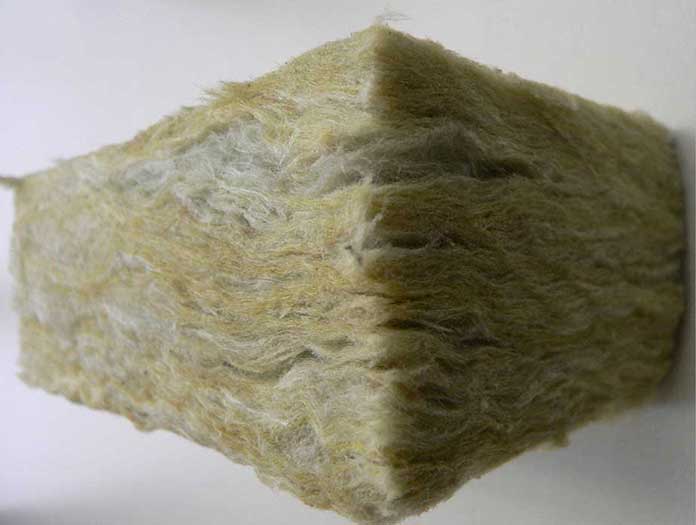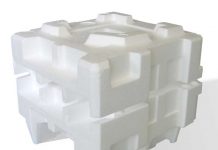Stone wool insulation, aka rockwool, is a widely accepted insulation material for buildings. With its exceptional thermal and acoustic properties, fire resistance and sustainability features, stone wool insulation has become a popular choice for homeowners, architects, and builders alike.
Rockwool has invented thanks to discovering that lava could be mixed with wool tassels 150 years ago in a volcanic eruption. It was later developed and converted into rockwool insulation material. Then, started to be produced in the 1850s and patented in the USA in 1875.
It is no coincidence that this material continues to be preferred today after 1.5 centuries. Strong features and some advantages over materials in the same category make this material stand out.
In this comprehensive guide, we’ll learn about wool insulation, exploring its properties, benefits and applications.
Whether you’re constructing a new building or upgrading an existing one, understanding the advantages of stone wool insulation will help you make an informed decision for a more sustainable and comfortable living or working environment.
What is rockwool insulation?

Rockwool insulation material is a thermal insulation that is produced by melting inorganic stones in nature at very high temperatures, around 1500 degrees, obtained from recycled slag [1].
Stone insulation, which is made of melting these inorganic materials, contains 97% fiber. This fibrous thermal insulation is generally marketed as standard-sized boards or rolls. This makes the rockwool for insulation purposes easier to install and transport.
Stone Wool Properties
As the thermal conductivity factor is low, it keeps the interior cool in summer and warm in winter just like other thermal insulation materials. Shortly, mineral wool insulation slows down the transfer of heat energy from the hot space to the cold space.
1. Thermal Conductivity of Rockwool
The thermal conductivity r value of rockwool insulation material is between 0.035 – 0.040 W/mK. This range is very close to the values of other thermal insulation materials.
2. Is stone wool fireproof?
Compared to EPS and XPS thermal insulation materials, rockwool insulation is safe against fire and is in the A1 fireproofing class.
Furthermore, it begins to melt at temperatures above 1000 degrees. In this way, it also provides effectiveness in protection against fire.
Thanks to the fire-stopping feature of the stone wool insulation in the case of a fire, the spread of the blazes are delayed and it gives time for the people inside to escape.
3. Does stone wool provide sound insulation?
The material has a surface that absorbs sound waves thanks to its fibrous structure. For this reason, yes, rockwool insulation panels are extremely useful building materials in terms of sound insulation.
The sound-absorbing criss-cross fiber structure converts this sound energy into heat energy.

Generally, in cases where sound insulation is more important, rockwool insulation material with a lower density should be used. In this way, the rate of air inside it increases and this helps to dampen sound waves.
4. Waterproofing
Rockwool insulation is a waterproof material. The fiber in its structure repels water. This helps the water in contact with the surface remain on its surface. It makes the material extremely effective in terms of waterproofing.
Moreover, Rockwool, which is a vapor-permeable material, prevents moisture from condensing.
It is expected that the layers in the structure shell will not pass water, and the vapor will pass from the outer layer to the inner layer at a decreasing rate.
Because if the vapor permeability is too low, the vapor may liquefy and turn into water leaking between the layers due to the temperature difference between the two environments. This damages the materials used in the building.
Other Features of Rockwool Insulation
Stone wool insulation boards have a variety of thickness options, from 3 to 12 cm. The length of these rockwool insulation boards, which are 60-120 cm in width, can reach up to 8 meters, and this length can be increased according to the need.
The dimensions of the material are not affected by temperature differences or changes.
The melting temperature is above 1000 degrees. The temperature range in which the product can be used efficiently is between -50 and +650 degrees.
Stone wool insulation material fills the gaps in the frame walls very easily. This is one of the best benefits of the material and makes it better than other rockwool alternative insulations according to this property.
It is a material that can be used throughout the life of the building, does not decay, and cannot be eaten by harmful organisms and insects. The reason why it keeps microorganisms away is its inorganic structure.
It is usually in a form of a panel. And it’s possible to cover the surfaces of the boards with glass tulle or aluminum foil, depending on the need.

The density of stone wools sold in the market varies between 40 and 150 kg/m³. In this direction, you can choose different densities according to the use area and climate.
As a result, this material is highly preferred due to its high thermal insulation values as well as good levels of sound absorption and fire resistance.
Where is stone wool insulation used?
There are different usage areas of stone wool. However, thanks to its non-rigid, compressible and formable structure; the efficiency and ease of application are higher on rough surfaces and in amorphous frames.
In this way, rockwool insulation is used for insulation purposes in many areas of our lives, except for the building sector.
It is widely used in exterior walls, roofs, suspended ceilings, separating walls, electrical appliances, insulation of aluminum and steel doors as well as and outer shells of ships and airplanes.

Conclusion
In conclusion, stone wool thermal insulation material, which was first produced 150 years ago, has become one of the most effective insulation materials in the building sector.
It offers a wide range of advantages that make it an excellent choice for energy efficiency, comfort, and sustainability in buildings. To summarize its strong properties, it features high thermal insulation, soundproofing, water resistance, fireproofing and high compressibility.
Whether you’re constructing a new home, renovating an existing one, or working on a commercial project, stone wool insulation offers a reliable and sustainable solution.
This versatility allows applications in various places, including residential and commercial buildings, HVAC systems, roofing, walls, and floors.
We hope this guide has provided you with valuable information about the benefits of stone wool insulation. Incorporating stone wool into your building project, you’re not only improving comfort and energy efficiency but also making a positive impact on the environment.
FAQ
A: Stone wool insulation is known for its durability and long lifespan. When properly installed and maintained, stone wool insulation can last for the lifetime of the building.
A: Stone wool insulation is made from natural stone and recycled materials, making it a sustainable choice. It is also recyclable at the end of its life, reducing waste and minimizing its environmental impact.
Choosing stone wool insulation helps reduce energy consumption and greenhouse gas emissions.
A: Yes, stone wool insulation has excellent sound absorption properties. Its dense and fibrous structure effectively absorbs sound waves. Thus, it reduces noise transmission and improves acoustic comfort in buildings.
A: ROCKWOOL is actually a brand name for stone wool insulation. Stone wool is a generic term used to describe insulation made from natural stone fibers.
Bibliography
[1]Discovery Channel. “How It’s Made (Belgesel)”. Date accessed May 11 2021.
[2]Achim Hering – Own work, CC BY 3.0, https://commons.wikimedia.org/w/index.php?curid=15235192. Date accessed May 11 2021.
[3]Recomandari Bellcraft. Flickr. Date accessed May 11 2021.




















